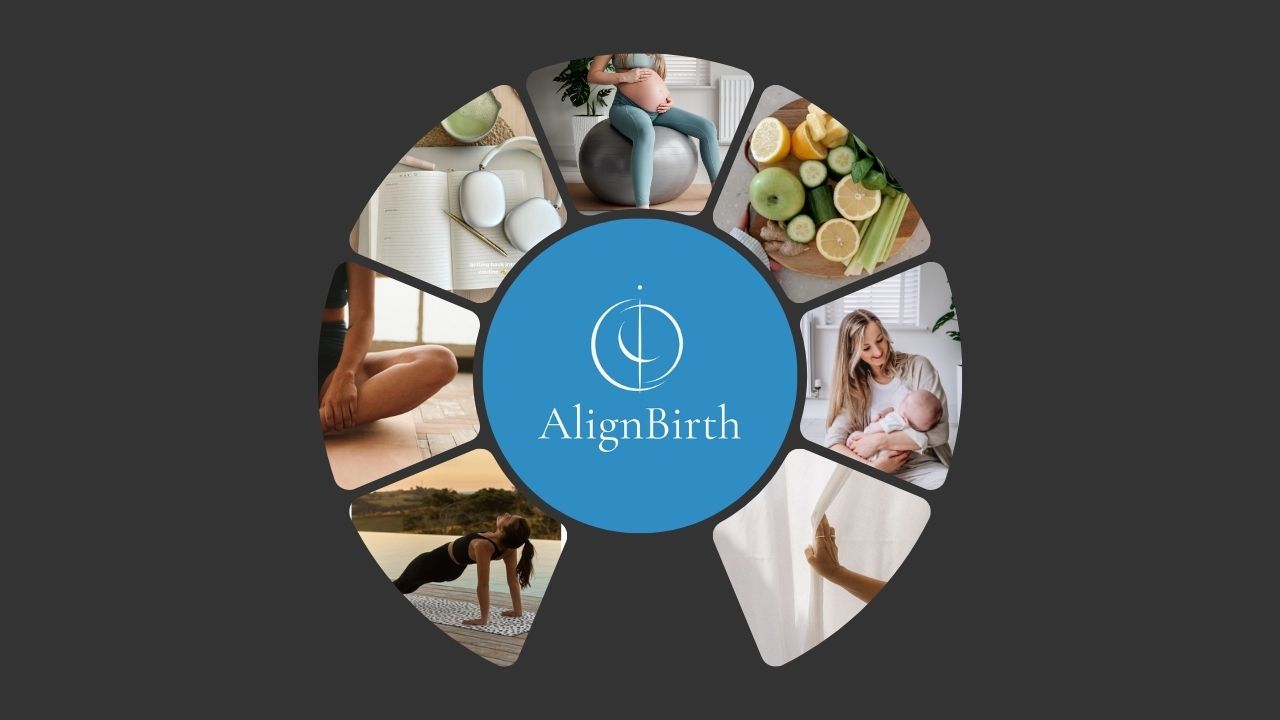Birth Hormones & Oxytocin: How to Support Your Nervous System in Pregnancy, Birth & Recovery
Oct 01, 2025
🌸 Birth Hormones & Oxytocin — Your Built-In Superpower
When it comes to preparing for birth, the focus is often on external checklists, what to pack, which class to attend, or the logistics of labour. But the real foundation of a smoother, more positive experience lies within your body itself: your hormones.
Oxytocin (often called the “love hormone” ) is your body’s built-in superpower. It drives contractions during labour, supports bonding postnatally, and helps you feel calmer, safer, and more connected. But oxytocin only flows when your nervous system feels safe.
Adrenaline and cortisol (your “fight or flight” hormones) do the opposite. They tighten your body, make your breathing shallow, and can slow or even stall contractions. This creates a cycle: fear triggers adrenaline, adrenaline changes your breathing, the altered breathing signals more fear, and panic builds.
The good news? You can train your body out of this cycle.
At AlignBirth, we use pregnancy to practice, because labour is not the time to start working it out. By learning breath awareness, movement, and nervous system regulation now, your body knows what to do when it matters most.
(P.S. If you missed it, AlignBirth was recently featured in the Daily Record as one of the UK’s most inspiring small businesses — a reminder that women’s support in this season of life matters. Read here.)
🤰 Prenatal: How to Nurture Oxytocin Before & During Birth
Think of oxytocin and adrenaline as opposites:
-
Oxytocin in abundance: contractions flow, labour progresses, and your body feels safe to open.
-
Adrenaline spikes: contractions can slow, stall, or feel more painful, leaving you caught in tension.
This is why practice matters so much. By the time labour begins, you want your nervous system to know how to stay calm — so fear doesn’t take over.
In AlignBirth, we focus on:
✨ Breath awareness — long, slow exhales calm the nervous system. Instead of shallow, rapid breathing (a stress response), your breath signals safety, helping oxytocin flow.
✨ Movement for soft tissue release — easing restrictions so your baby can find their best position, reducing physical challenges that could slow labour.
✨ Birth biomechanics — creating space in your pelvis so labour can progress smoothly.
When you practice these tools in pregnancy, you build both muscle memory and confidence. So when intensity rises in labour, your body doesn’t default to panic — it defaults to calm.
Your environment matters too. Oxytocin loves privacy, safety, and calm. Small details — dim lights, soothing music, soft touch, and familiar scents, tell your nervous system “you are safe,” keeping oxytocin flowing.
📌 I’ll link simple oxytocin boosting recommendations below.
🤱 Postnatal: Oxytocin for Bonding, Milk Flow & Recovery
After birth, many women feel like they’re constantly in fight-or-flight. Between sleepless nights, feeding challenges, and emotional ups and downs, adrenaline can stay high, leaving you feeling wired, tense, and depleted.
But oxytocin continues to be vital after labour:
✨ It supports bonding with your baby.
✨ It aids milk flow and breastfeeding.
✨ It calms your nervous system, supporting emotional recovery.
Inside the AlignBirth postnatal programme, we use gentle breath, mobility, and nervous system resets to help shift you out of fight-or-flight and back into calm. This isn’t just “relaxation” it’s recovery, hormone balance, and long-term resilience.
You can also support oxytocin daily with small rituals that cue safety:
🍵 A comforting cup of tea
🛁 A warm bath with essential oils
🎶 A calming playlist
🌙 Low lighting in the evenings
💤 A few slow, deep breaths before bed
These rituals matter because constant adrenaline and cortisol don’t just affect your mind — they change your body. They tighten muscles, restrict breath, and even alter blood chemistry, making it harder to access calm. Awareness, breath, and simple daily supports bring you back into balance.
📌 I’ll link simple oxytocin boosting recommendations below.
🛍 Member Recommendations
Here are some beautiful, simple tools to support oxytocin at home recommended by real members (check out the full list on my Amazon storefront)
-
🍵 Relaxing herbal teas (check out Hot Tea Mam & their incredible blends - including their Final Push Raspberry Leaf Tea blend 🥰)
-
🌿 Essential oils diffuser (the Neom diffuser is a winner with members - no water required so perfectly portable to take with you to hospital or birthing centrelavender, clary sage for a soothing environment)
- 🌿 Essential oils roll on (members loved the pulse point roll on for helping them feel relaxed)
-
🕯 Battery tealights (a simple yet transformative way to turn a bright room into a calmer space)
- 💆♀️ Massage (a spiky message ball works wonders on relieving tense areas, think glutes, shoulders & even the soles of the feet)
- 📔 Journalling (using a journal regularly helps members work through the racing thoughts & gain clarity & calm)
-
🔊 Portable speaker (for affirmations, meditations, or playlists)
- 🛁 Epsom salts (for relaxation in the bath)
As an Amazon Associate, I earn from qualifying purchases.
Your body already knows how to give birth, and oxytocin is your built-in superpower. But whether oxytocin flows or gets blocked depends on your nervous system.
Fear and adrenaline can create a cycle of panic, tension, and stalled labour. But with practice in pregnancy, through breath, movement, and environment, you teach your body how to stay calm, how to release tension, and how to work with your hormones instead of against them.
Postnatally, those same tools support bonding, milk flow, and emotional recovery — helping you shift out of fight-or-flight and back into calm, confident motherhood.
I’m with you in this — every step of the way.
Love, Meghan ✨
AlignBirth is our award winning online programme - helping women reduce pain in pregnancy, promote a smoother labour & effective recovery - join now & try FREE for 7 days
